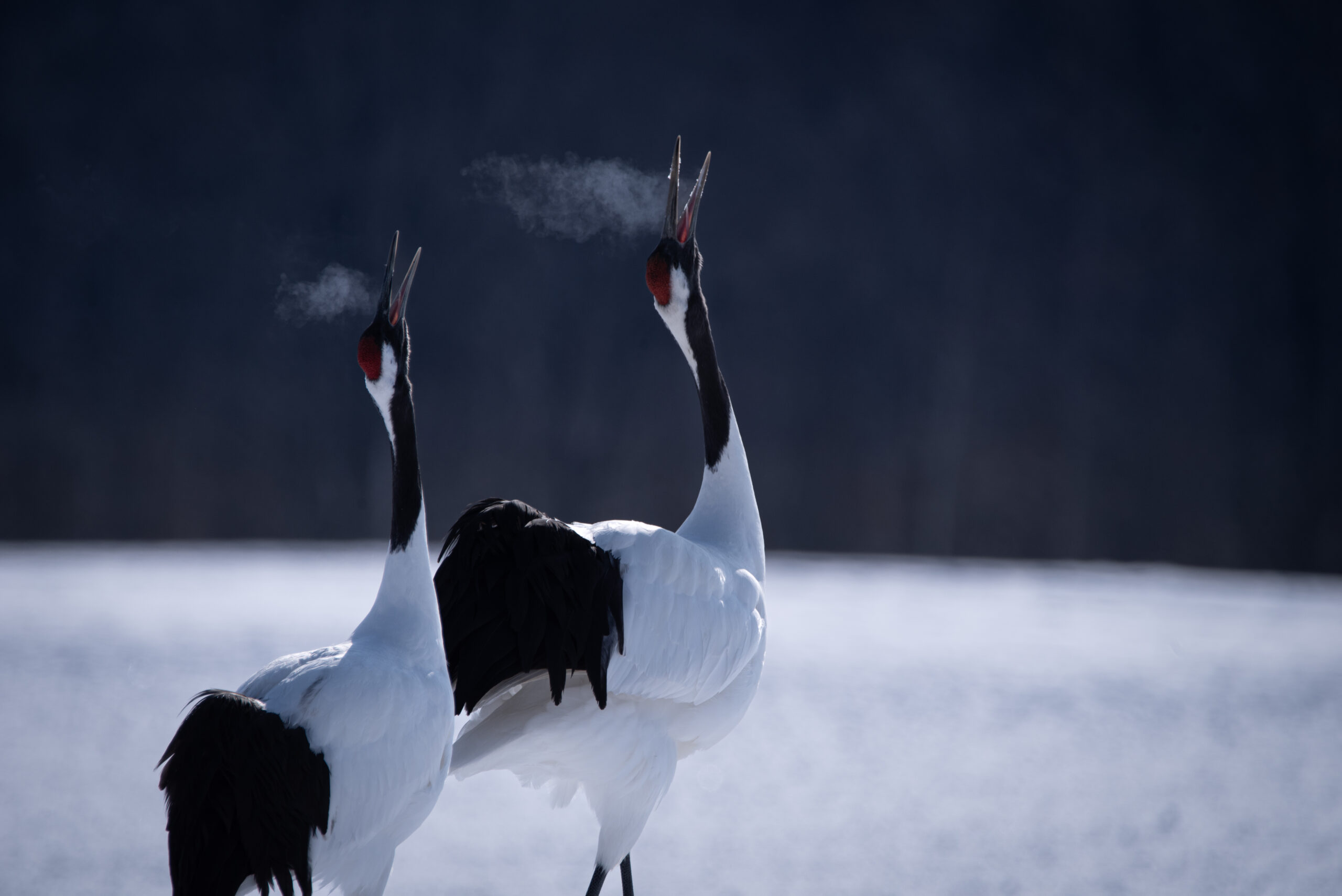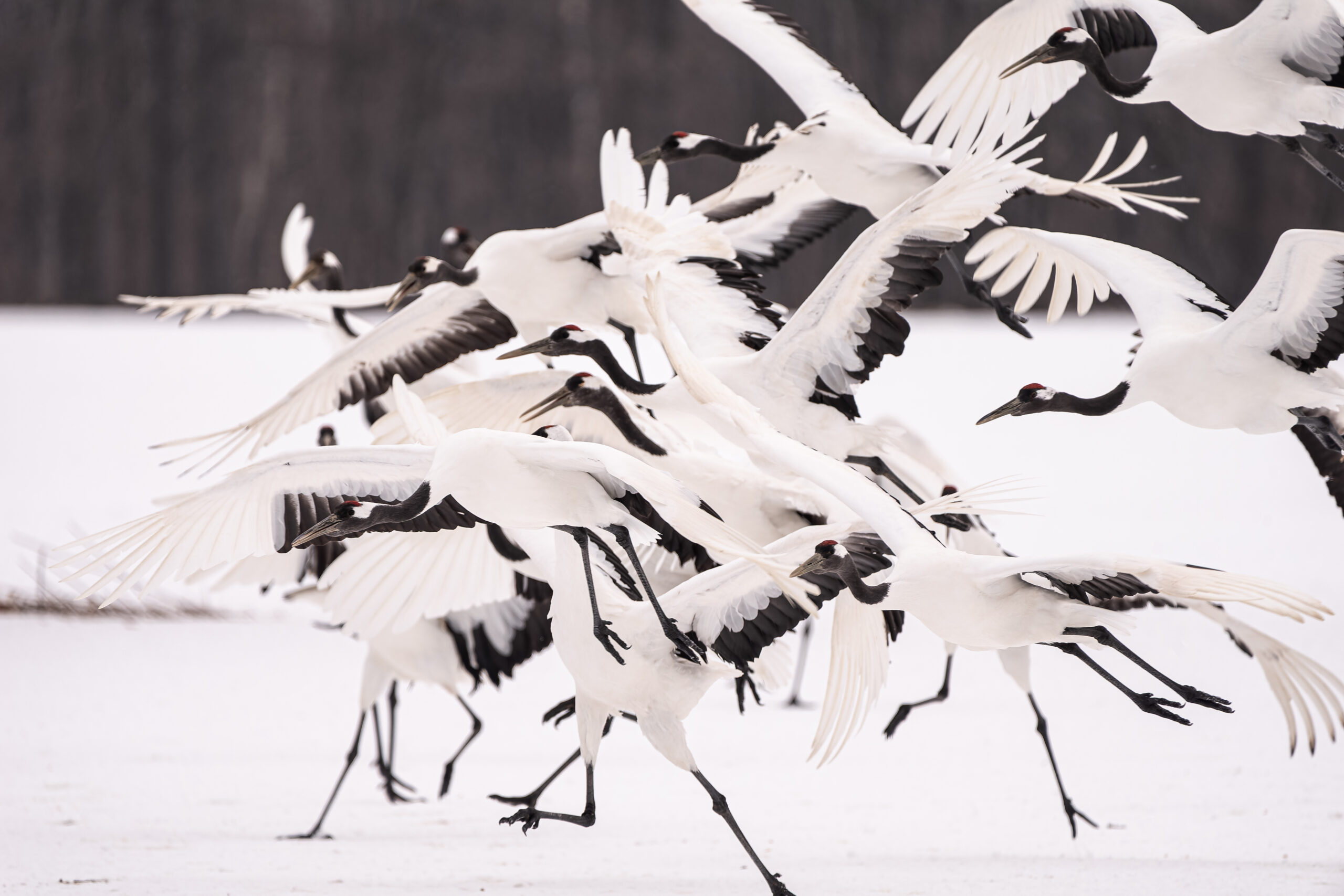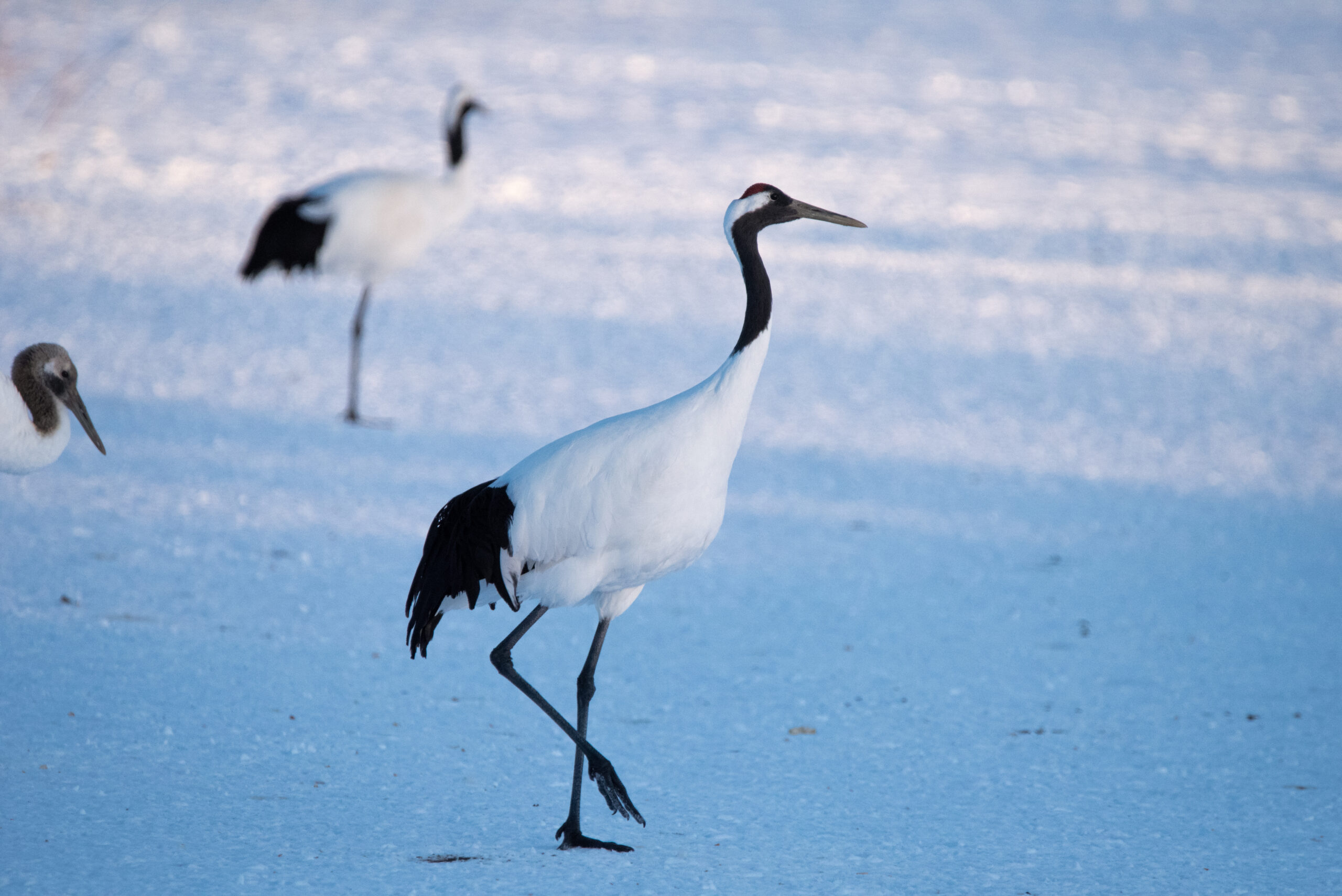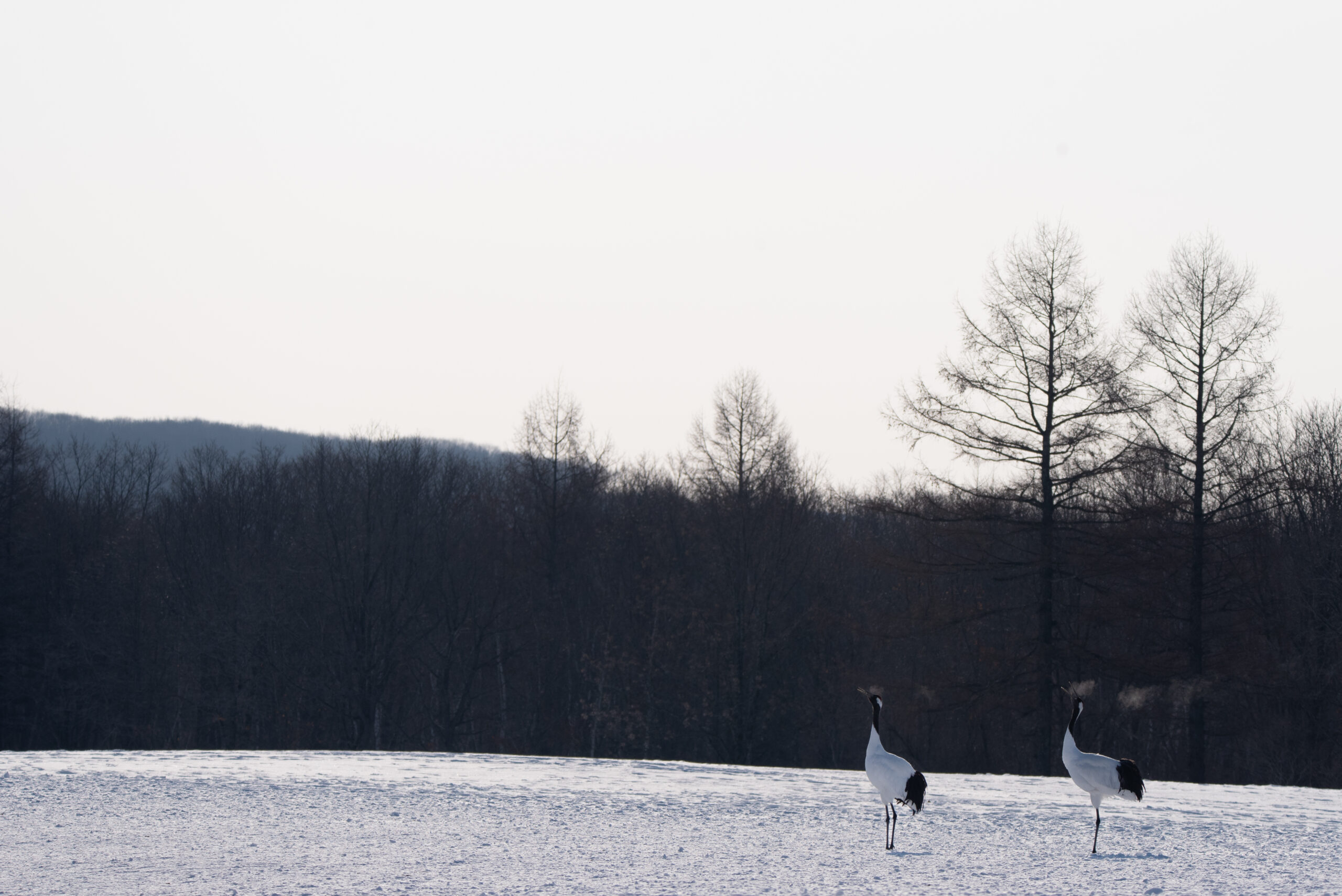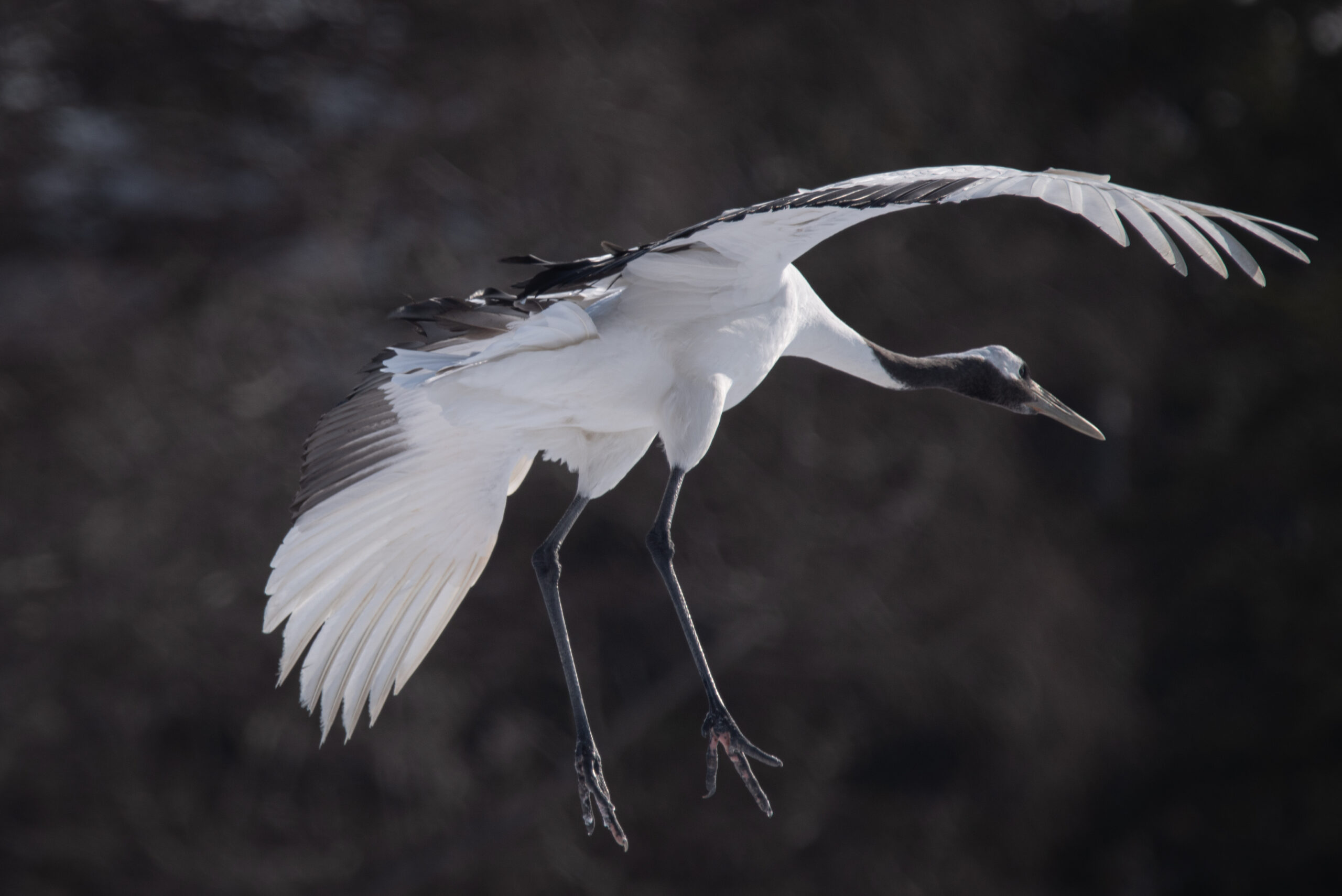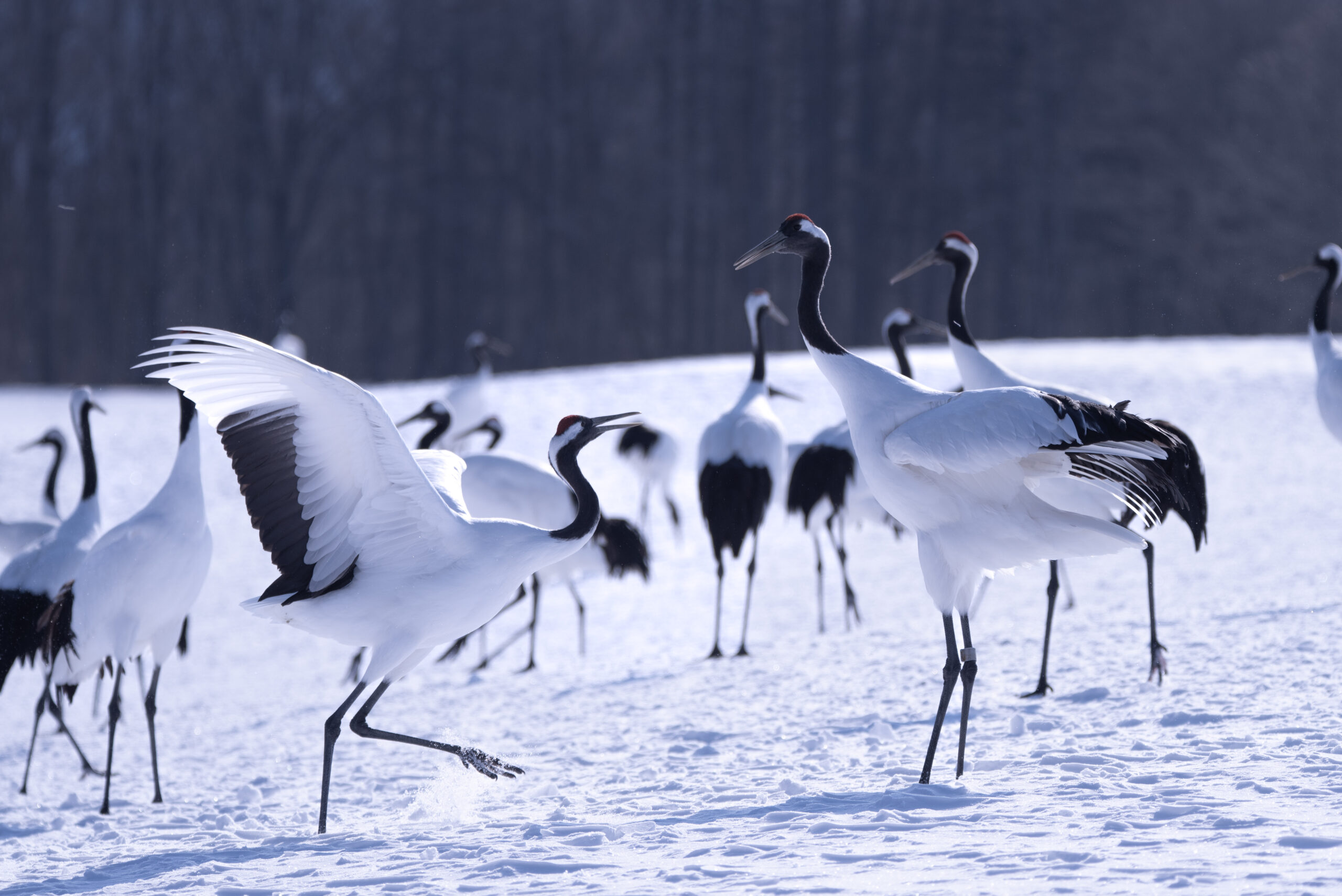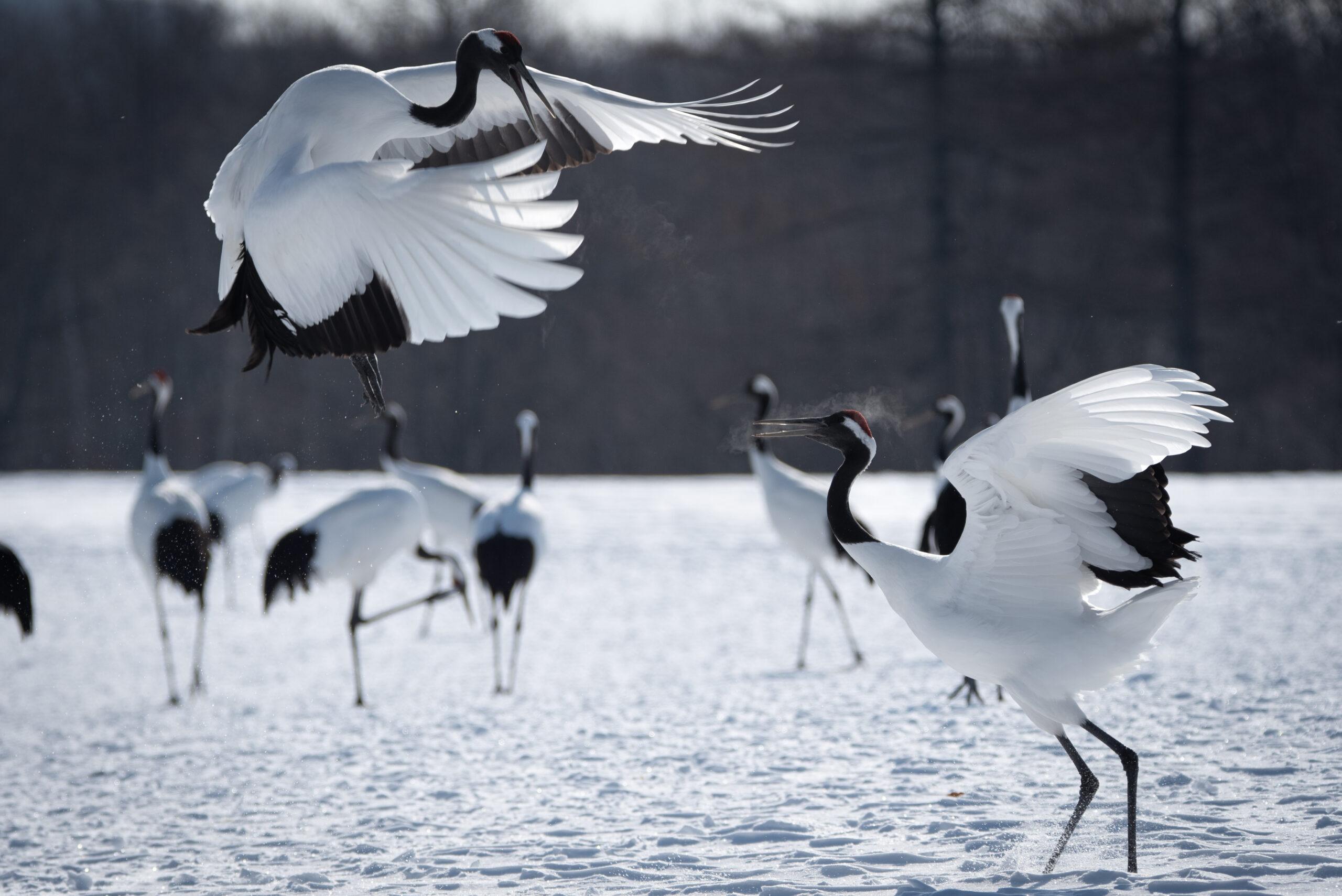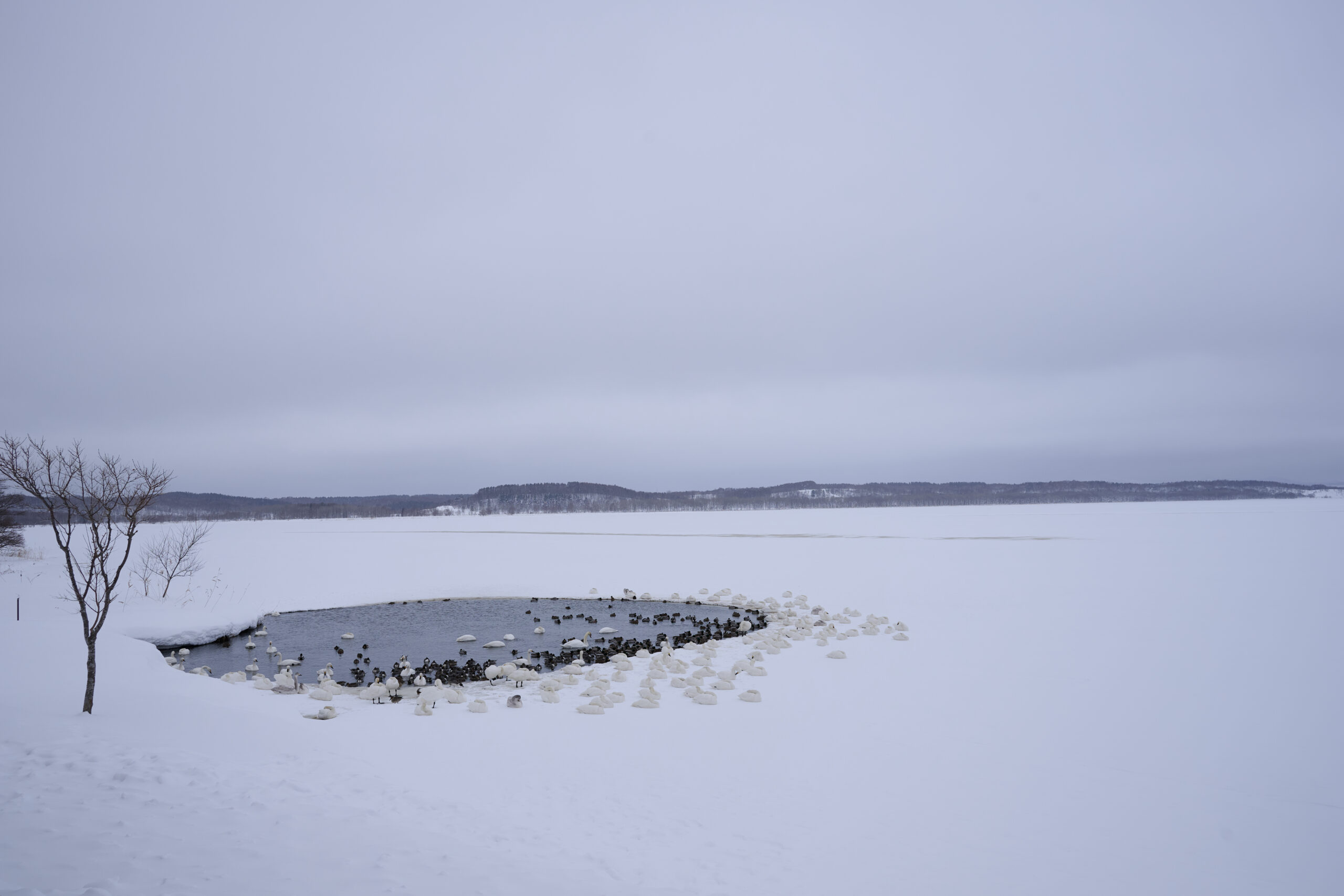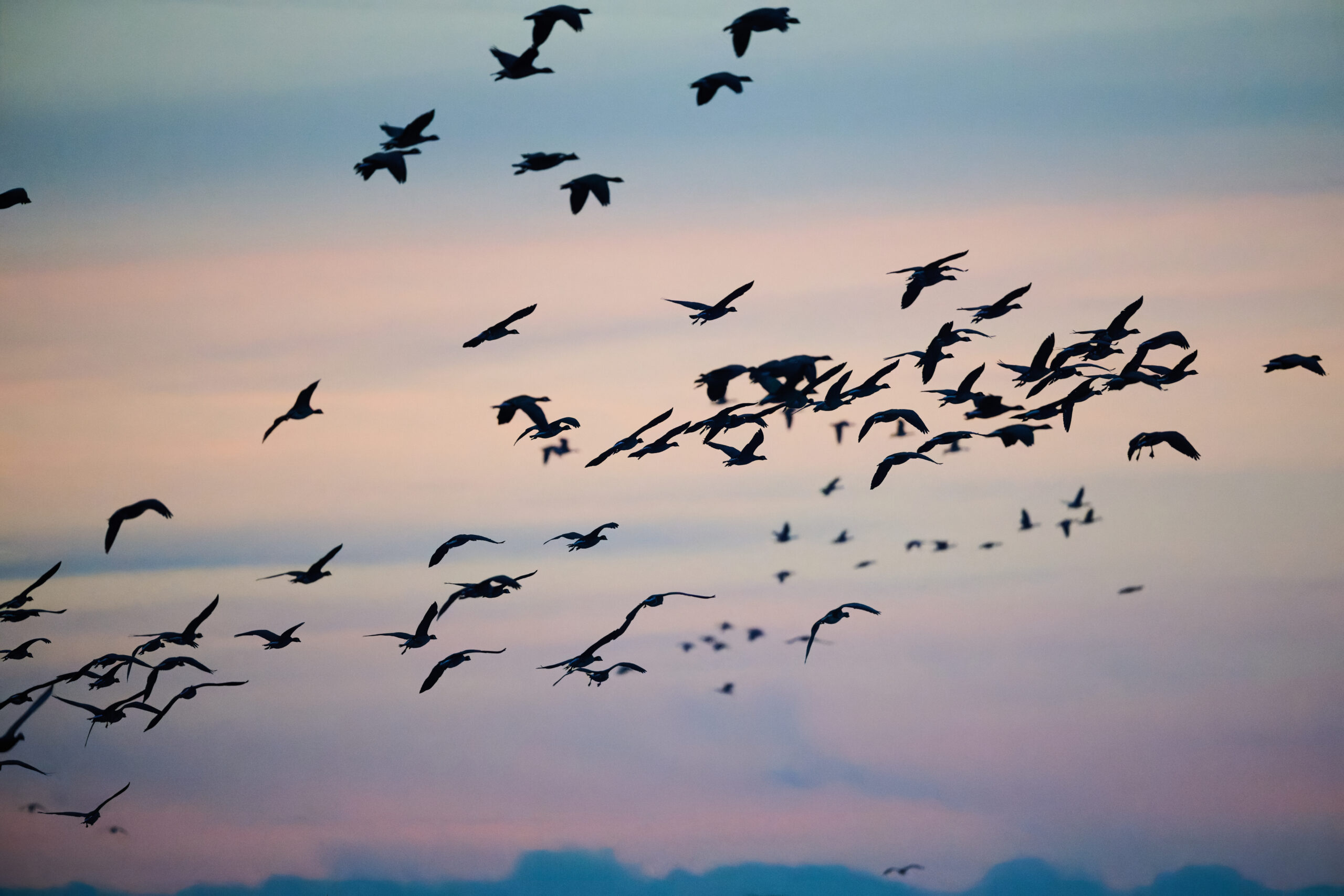The village is located near Kushiro Marsh in Hokkaido and is famous as a place to observe red-crowned cranes. The Japanese red-crowned crane was once nearly extinct (or rather, thought to be extinct), and through feeding activities, the number has been restored to 1,800. In Tsurui Village, the Tsurui Ito Red-crowned Crane Sanctuary is a representative place where red-crowned cranes can be observed, and this is one of the places where such feeding activities were conducted and are still ongoing. The red-crowned crane is Japan’s largest and most beautiful (I believe) and graceful bird, and its beauty is further enhanced by the ice dance that can be seen in February. The Ainu called them “gods of the marsh,” and their dancing is indeed divine and somewhat like fairies (I never want to see fairies though).
- red-crowned crane
- Sometimes white-tailed eagles fly in.
(Access to Tsurui Ito Sanctuary Center)
- Bus 1: Approximately 60 minutes from JR Kushiro Station by Akan Bus bound for Tsurui Recreation Center.
Get off at “Tsurui-mura Yakusho-mae” (in front of Tsurui Village Hall) and walk about 10 minutes. - Bus 2: From Kushiro Airport, take the Akan Bus or Kushiro Airport Connecting Bus for approximately 45 minutes.
Get off at “Kushiro Eki-mae” and transfer to the above bus. - Car: 40 minutes from Kushiro Airport, 50 minutes from JR Kushiro Station, parking available (free of charge).
Parking is available in the facility and is ample.
- In February, the lowest temperature in Tsurui Village drops to about -20 degrees Celsius, so you need to be well-prepared for the cold.
- The photo spot in the Sanktuari Center is suitable for photography because there are few man-made objects around it. In particular, the background toward the back from the shooting location is dark with trees.
- The red-crowned cranes gather at feeding time. They start gathering around 7:00 a.m., half fly away after the morning feeding (around 9:00 a.m.), and gather again for the afternoon feeding (around 2:00 p.m.).
- According to the facility staff, they are most active around 13:00. Incidentally, feeding is conducted from mid-January to mid-March.
- The red-crowned cranes gather on a large hill-like area (feeding ground). There is a fence in front of the feeding area where you can watch the red-crowned cranes. A 600mm-800mm lens is recommended for a large image.
- The fence is lower on the left side toward the feeding area and higher on the right side. The feeding area has the same shape. The area underfoot is covered with snow, and it is hard like ice where photographers gather, so you must be very careful not to slip.
- You can shoot from anywhere in front of the fence, but the left side (Shooting Point 1) and the right side (Shooting Point 2) toward the feeding area are the most popular. The left side is lower, but many cranes gather at a relatively close distance. On the right side, you can shoot from a slightly higher vantage point, which makes it easier to take pictures without other red-crowned cranes in the background, and it is also easier to take pictures of cranes flying in the air.
- Photographers begin to gather around 7:00 AM. The photo point on the left is the first to be secured.
- The ice dance can be seen in February. Before the ice dance begins, the cranes perform a unique behavior. They get low, keep their heads low, and approach their partners. If the partner complies, the dance begins. If it does not, they approach another red-crowned crane in the same position. Even the young cranes dance, whose feathers have not yet grown back.
- Sometimes they fight in a form similar to ice dancing. Usually it ends with the larger red-crowned crane threatening the smaller one, but it can escalate if neither side is willing to give in. Finally, they jump and kick each other. When they land, they strike their signature pose of looking up with their necks bent down as if to shout for victory, but since both cranes do this, the winner is never known. It is reminiscent of the victory pose that both birds strike at the end of the final round of a boxing match.
- This victory-cry pose is also often seen when a flying red-crowned crane lands on the ground.
- When a couple of red-crowned cranes line up to sing (call together), you can observe the white breath coming out of their beaks. It looks good against a dark background.
- When cranes leave the feeding area, they often walk slowly to a high hill on the left side, spend some time there, and then fly away. According to a person at the Sankt Charity Center, one of the cranes will make a mouthing motion like a signal before leaving the feeding area.
- In February, when the ice dance is held, accommodations are almost always full due to the large number of tourists and photographers that come to the area. It is necessary to make reservations as early as possible.

